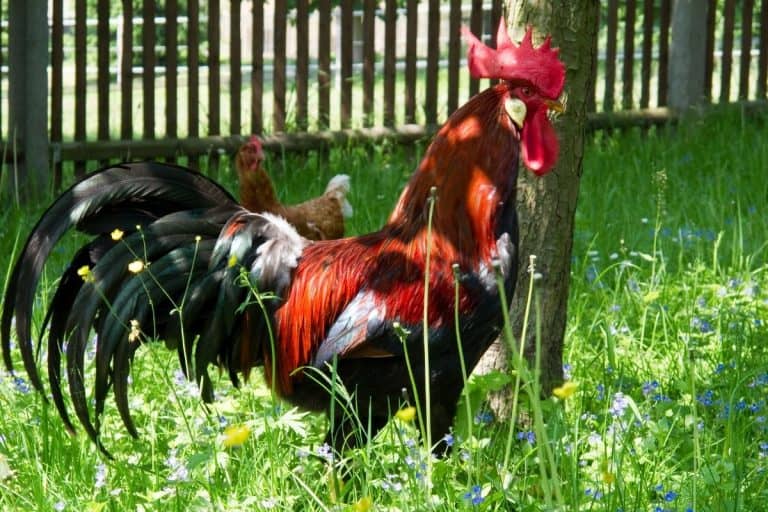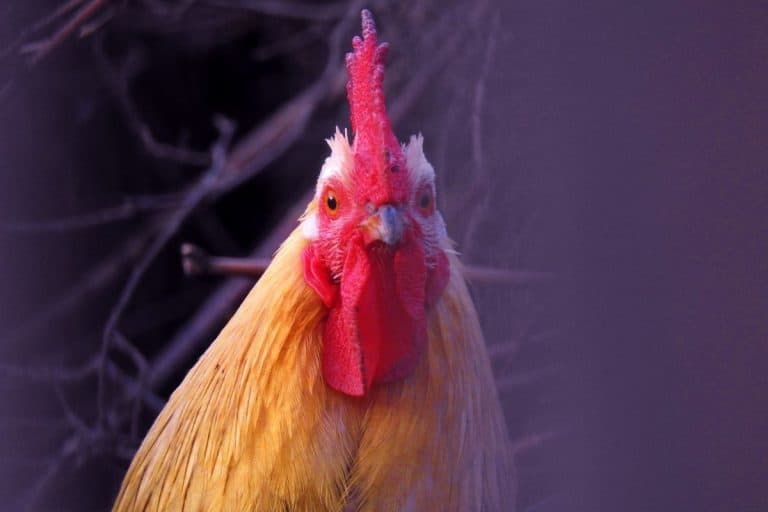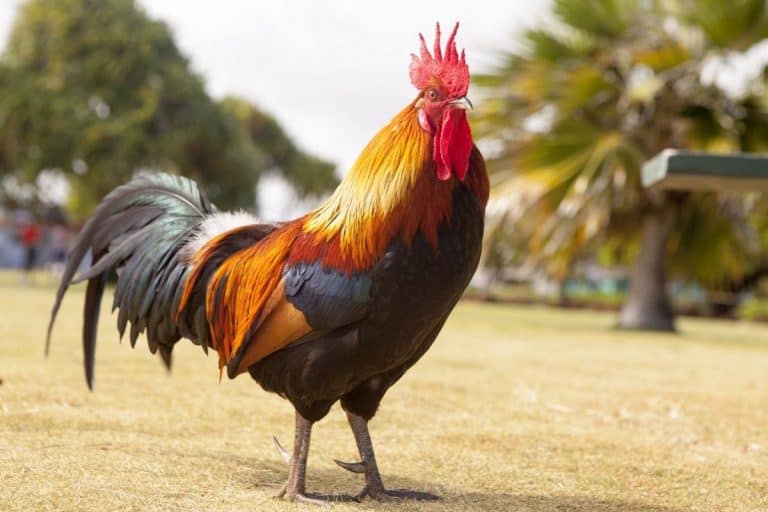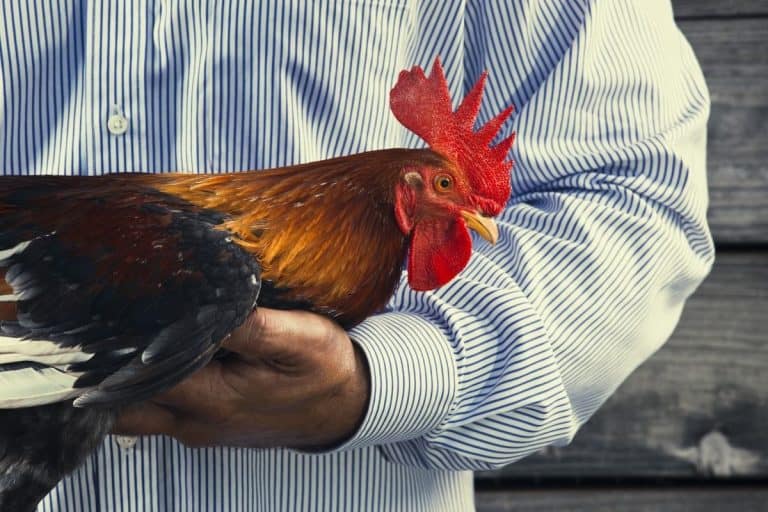Are Roosters Dangerous to Kids? (+ tips to protect them)

If you are thinking of keeping hens and want to have a rooster along as well, you might be a little bit worried about the danger that the rooster might pose for your children or any other kids that get too close.
If not handled properly, roosters can be very dangerous to kids. Both their pointed beak and their sharp spurs can inflict a lot of harm on an unwary child that frightens or threatens the bird. However, roosters can be taught how to behave safely around children.
Here’s a quick look at the threat that roosters pose, along with a summary of how you can train the rooster to stay away from your children:
Hey chicken buddies: Quick heads-up before going further! I've put together a list of stuff I use and love for my flock. If you're curious about what keeps my hens happy, click here to find out.
Recognizing a Rooster
The word ‘rooster’ is used to describe male chickens. As opposed to the relatively calm and docile hen, the male chicken has its own attitudes, behaviors, and appearance that result from hundreds of years of evolution.
Roosters are most easily differentiated from hens by their coloring. Rather than sporting the standard earthy tones of hens, roosters usually have feathers that display a variety of showy colors, including red, orange, and even green and blue. They are also more slender than the hens, while simultaneously being taller.
In addition to their coloring and size, roosters are also identifiable by their collection of pointy feathers on their necks and backs, which hens lack. Roosters develop their spurs during the first year of their 5 to 8 year lifespan. These spurs can be spotted on the back of the rooster’s legs, near their talons.
The spurs are dangerous weapons that the roosters use to fight other males and defend their territory.
Though the rooster is small in size, it is important to remember that roosters are just like any other male of their species. They are territorial, they can often be seen posturing, and they compete with other males for the right to breed with females. Their hormones are just as strong as those of a bull or a buck goat, and they will act on their hormonal impulses if they aren’t kept in check.
Wait, I have some recommendations for you!
Before you go any further, I want you to take a look at some of the recommendations I've handpicked for you. I think these are essential items you should have for your chickens flock. You can check them out and buy them directly from Amazon.
 |  | 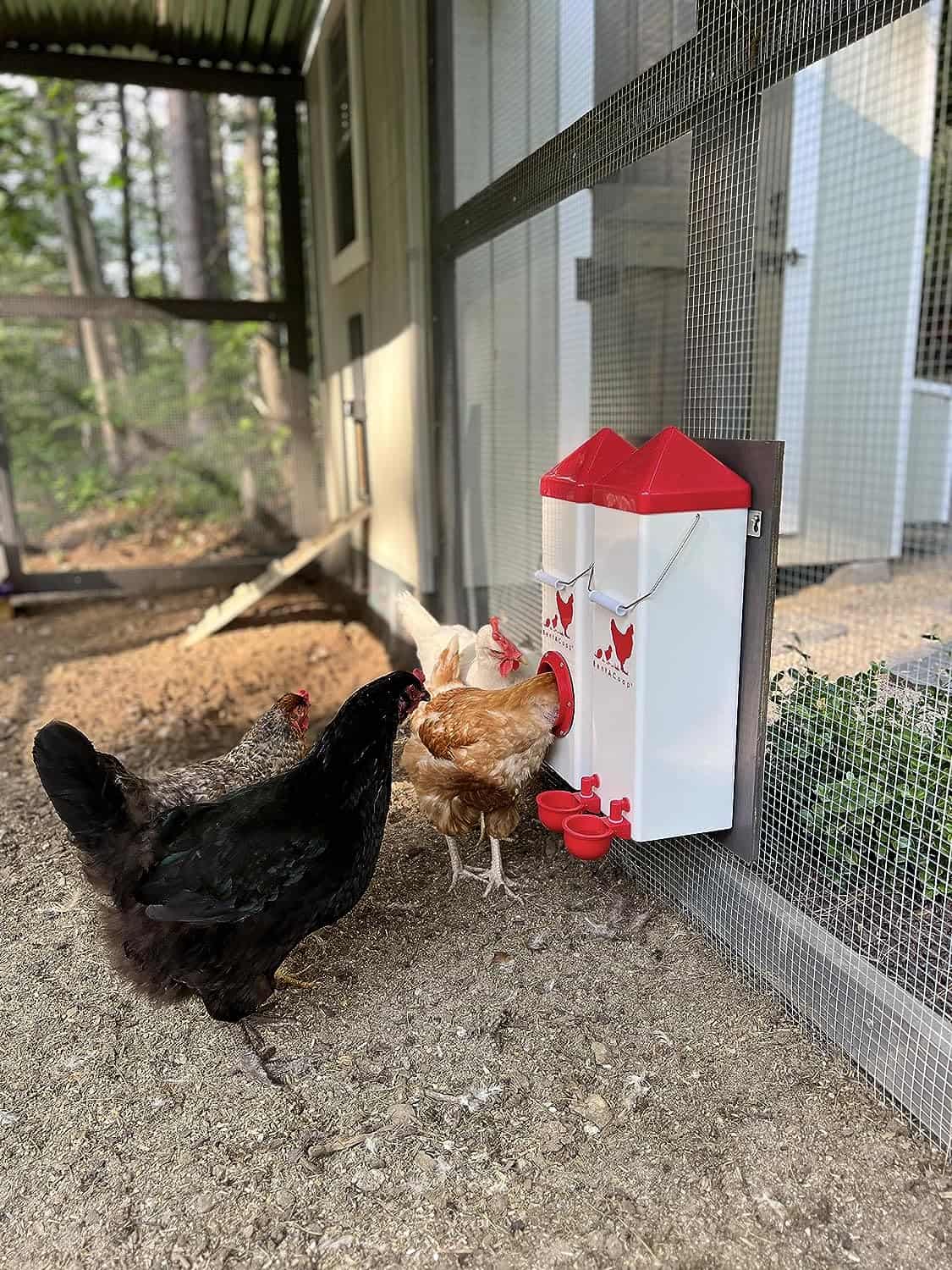 |  |
| Essential accessory for your coop | No more tripping over hoses! | Predator protection made easy | Comfort + style is possible |
Rooster Behaviour Around Kids

Though roosters will not go out of their way to cause harm to any human, they are still fighting creatures. In fact, historians agree that the first chickens to ever be tamed weren’t tamed for their eggs or meat at all. Instead, the people of Asia, Africa, and Europe trained roosters to participate in cockfights, battling other roosters with their spurs. Aggressive male roosters were dangerous enough that many cockfights ended with both roosters dead or maimed.
The biggest problem that roosters have with children is that children are wild and unpredictable to roosters. They may easily become threatened by the movements of children and feel that they need to defend the females in their brood.
Children’s grasping hands can also make them scared or nervous, which greatly increases the chances that they will attack. When it comes to attacking, roosters can aggressively run at small children, peck them sharply, beat them with their wings, and even cut or impale them with their spurs.
“I know that roosters can be dangerous because I once knew a kid that had a rooster knock him down and attack his head until an adult was able to come and chase off the bird.”
The most dangerous age for a rooster is while they are still young, around the 4-6 month range. At this time, the birds have not yet learned how to behave themselves around children or humans in general, and are just finishing developing their spurs. Older birds will not be as aggressive, as they will hopefully have learned to not be bothered by children.
How to Handle an Unruly Rooster

Though roosters can be dangerous and aggressive, there are plenty of ways to keep from having to worry about your rooster attacking one of your children.
The first and most important thing to understand is how a rooster reacts to humans in general. Like most animals, they will want to assert dominance over their territory. If they are allowed to believe that they are the dominant creature, they will become very difficult to manage.
One way to tell if your rooster considers itself the dominant creature is by how it moves. In most groups of animals, you can tell which is the dominant animal by watching which animals get out of their way. The dominant animals will be free to walk where they please, while animals that are on a lower rung must move out of the way. If you are walking towards your rooster and it doesn’t scramble to get out of the way, you likely have an ornery rooster.
This behavior probably happened because you avoided the rooster too much yourself, letting it think that the rooster was in control. The disrespectful rooster probably learned its behavior during the first few months of its life, when puberty was first starting and the animal first experienced the new hormones.
The solution for when you have an overly aggressive rooster is to teach it that you are the dominant creature. One of the ways that you can do this is by getting yourself a stick or some other item that extends your reach, and then walking purposefully through the rooster in question. If the rooster doesn’t get out of your way quickly, or if he only moves the minimum amount for you to pass, you should go crazy. Make a lot of noise, chase down the rooster, and try to poke it a few times with your stick.
Though it might take a few times for the rooster to learn its lesson, you should soon get a rooster that has the proper attitude towards you. If you do it right, your rooster should also learn to respect your children, getting out of their way, and not being aggressive towards them. The best time to do this is while your rooster is still young.
If you train your rooster from a young age, he should grow up to be a very respectful bird. In extreme circumstances or during the training period, at least make sure your kids understand the off-limits areas and set up some fences or barriers to keep them separated.



